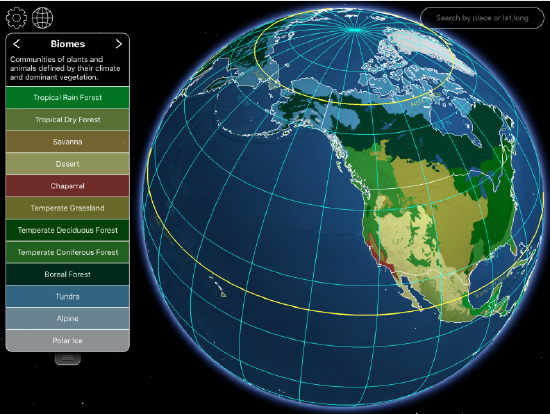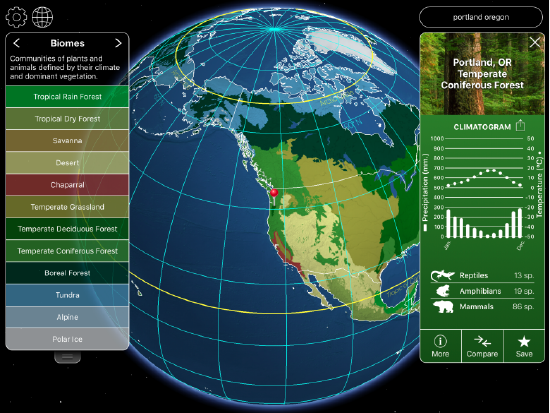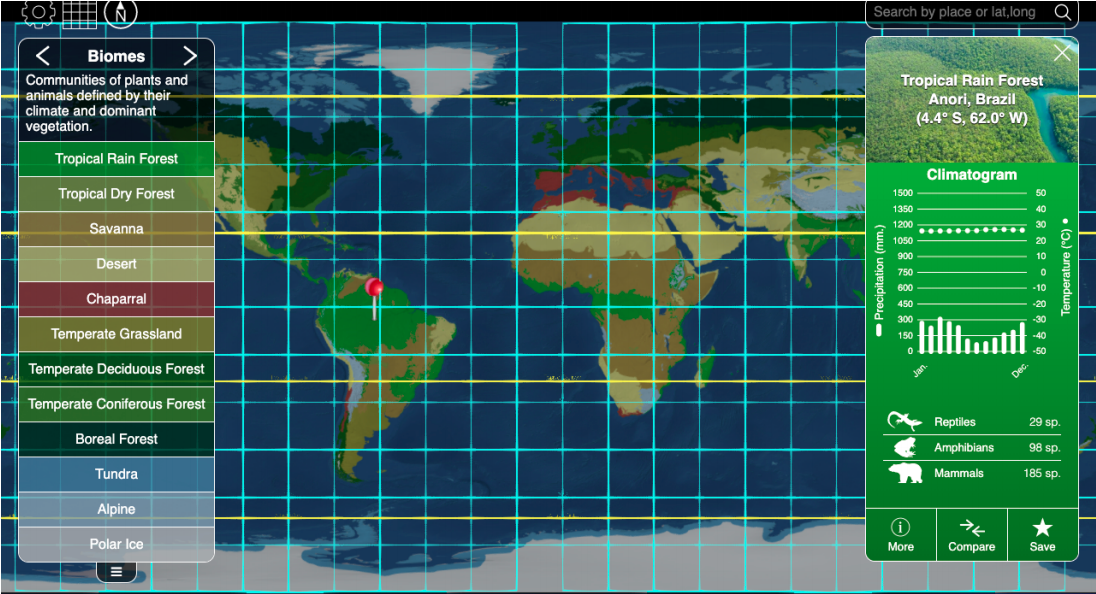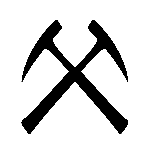3.2: Investigation
- Page ID
- 28668
Activity A – Examining basic climate data
Launch Biome Viewer <media.hhmi.org/biointeractive/biomeviewer_web/index.html>. By default, you will be shown a rotatable globe that will enable you to access climate data and biome information for major areas of the globe (Figure 3.2.1).
To do this click on the globe or type in the name of a city, state, or country in the search box in the upper right corner of the frame.
For this part of the activity, type in the name of the city you live in. Use the data panel that appears to the right of the globe (Figure 3.2.2) to answer the following questions…
Questions
- What biome is the city in?
- What is the maximum and minimum monthly average temperature?
- What is the average annual temperature?
- What is the maximum and minimum monthly precipitation?
- What is the total annual precipitation?


Activity B – Gathering information about biomes and Climate zones
Begin this part of the activity by selecting a country and typing its name in the search box. The program will display this country with a virtual “stick pin”. Once it does, use the map of the country to answer the following questions….
Questions
- What biomes are present in the country?
- What plant communities are present in each biome?
- What is the climate of each biome?
Activity C – Examining the global distribution of climate zones
In this part of the activity you will be looking at how latitude and elevation impact climate. Begin by selecting “Biomes” from the menu on the right. Then flatten the globe into a map by clicking on the grid symbol in the upper left.

Use this map to answer the following questions….
Questions
- What biomes are in the tropics? What are the general climatic characteristics of these zones and what is the major type of vegetation found there? The tropics is the area between 30°N and 30°S.
- Which of the climate zones you identified in question 1 is shaped largely by elevation?
- The area between 30°N and 60°N, as well as the area between 30°S and 60°S are called the mid-latitudes. What biomes are found in these latitudes? What principle types of vegetation are found in each and what are the general climatic conditions in each?
- The area above 60°N and above 60°S are the polar latitudes. What biomes are found here and what are their climatic conditions and major vegetation types of these biomes.


